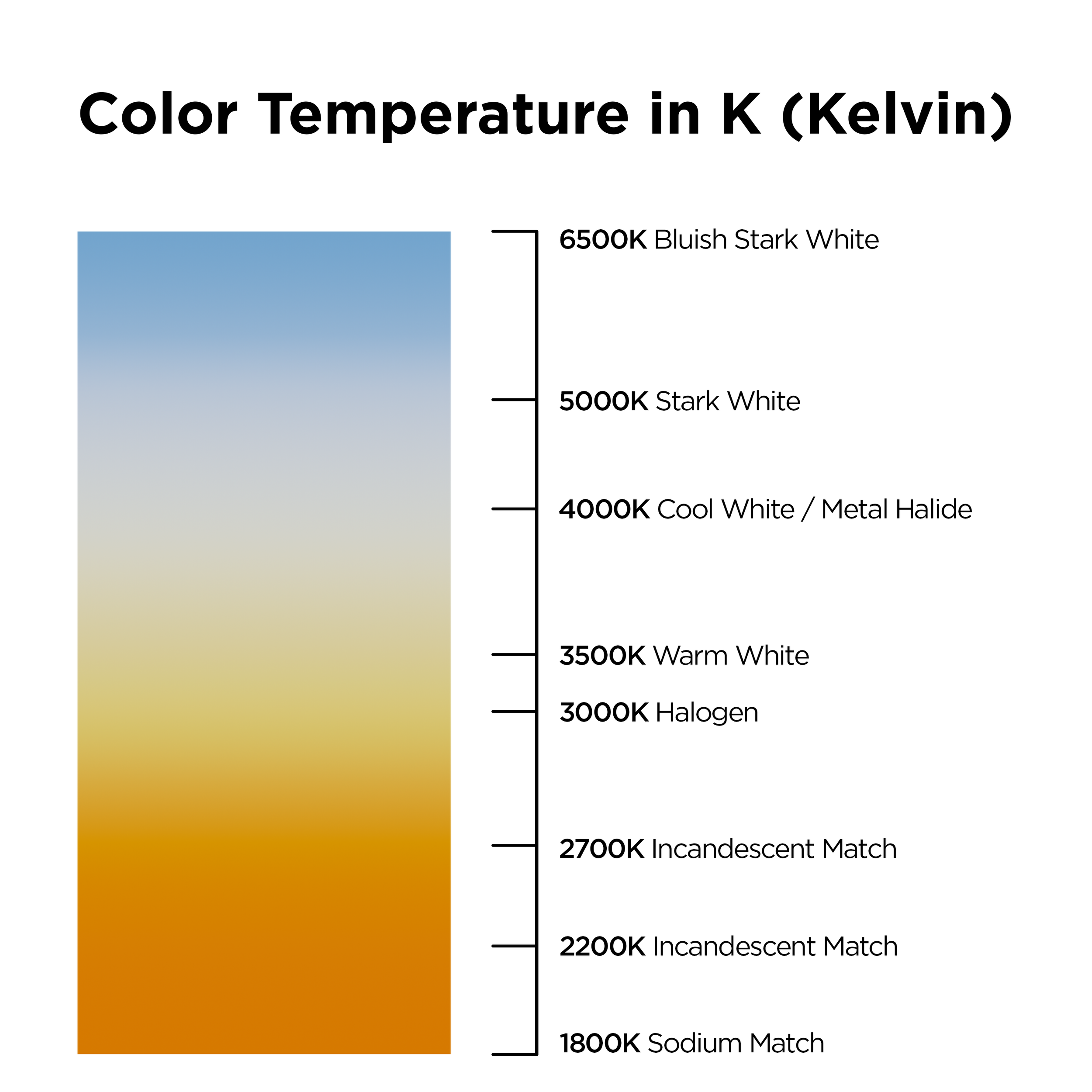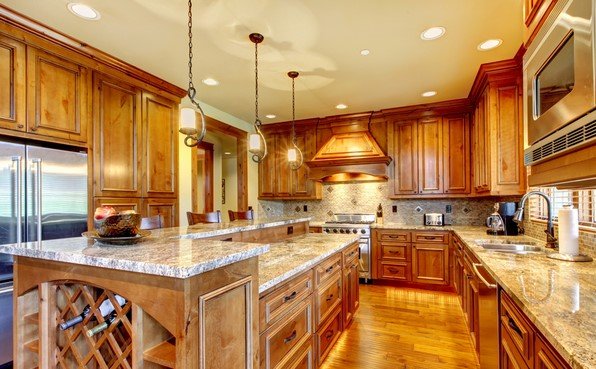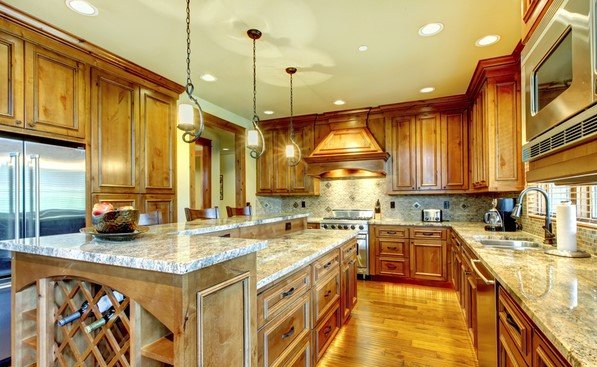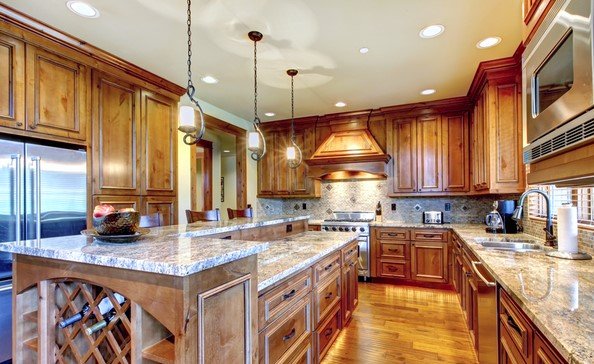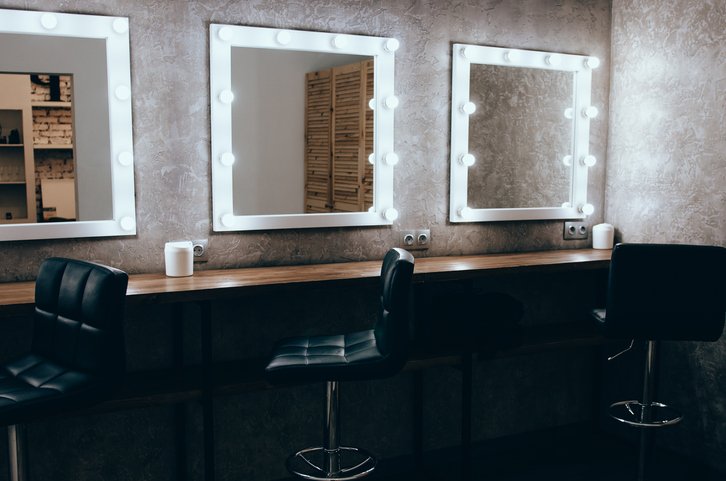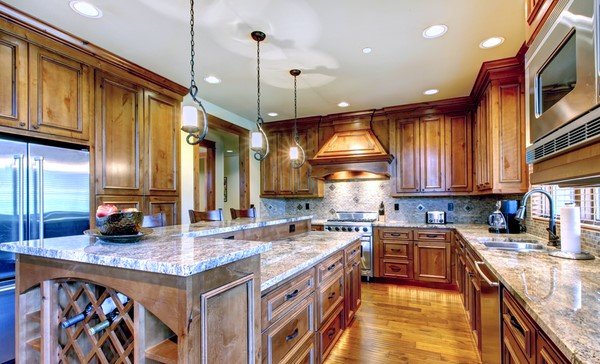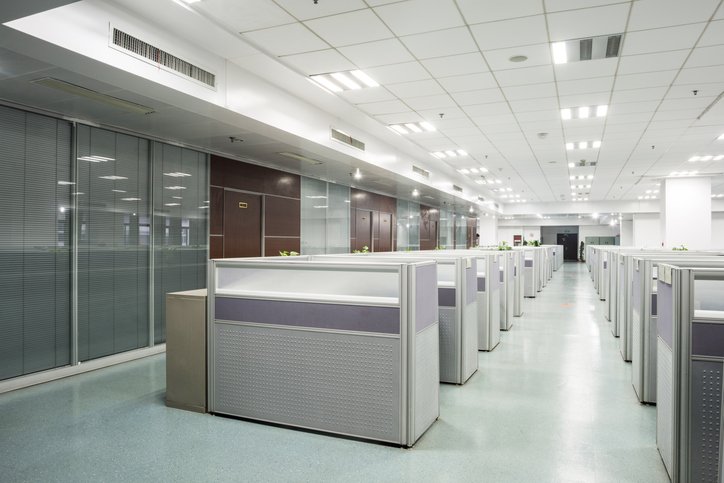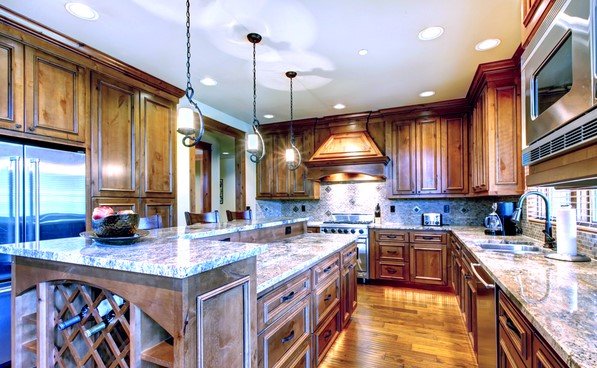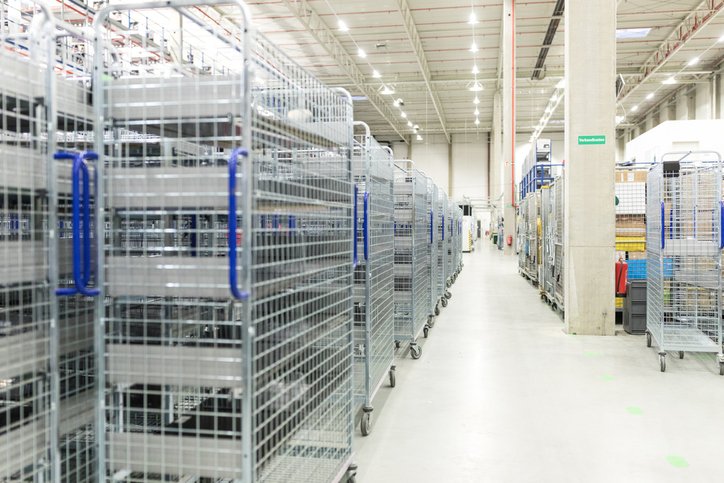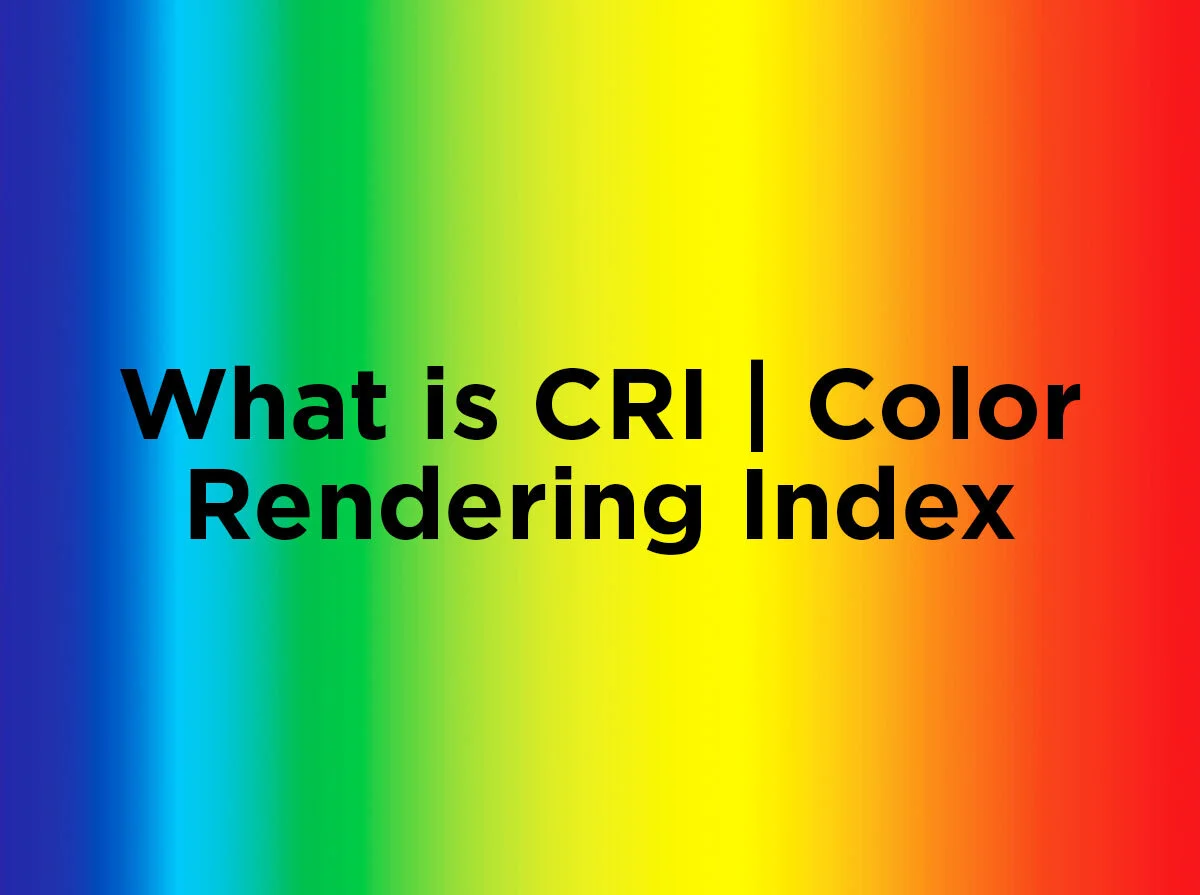What is Kelvin? Color Temperature Explained
Updated 12/12/23 by Angela Rogers
Have you ever purchased a new light bulb expecting the same warm, yellow light as the bulb you replaced, only to end up with a much brighter, whiter light instead? Chances are you didn't know to check the bulb's color temperature before making your purchase. Nothing turns people off from making the switch to LED or fluorescent lamps like accidentally selecting a bulb in the wrong hue. Let's take a closer look at what color temperature is and how it affects your lighting choices.
Kelvin color temperature scale.
What is Color Temperature (Kelvin)?
Every light source has a distinct character, from the warm, dim glow of a candle to the bright blue beam of a street light. Brightness, measured in Lumens, is one part of that character; the other part is color temperature, measured in degrees Kelvin.
Also referred to as CCT (correlated color temperature), color temperature is not the ambient hot/cold temperature of our surroundings (Celsius or Fahrenheit) . Its the color of the light that is produced by the bulb. The higher the color temperature, the cooler light gets. The lower the color temperature, the warmer light gets.
For example, a light bulb with a color temperature of 5000K would display light closer to the brilliance of the sun, than a bulb with a warm color temperature of 2700K. The latter of the two bulbs would be closer to the amber color produced by a flame.
The Kelvin Scale
As mentioned above, the Kelvin scale goes from warmer light up to cooler, more blue light. Correlated color temperatures can be grouped depending on where it is at on the scale.
Warm Color Temperatures (2700K to 3500K)
Lights with CCTs between 2700K-3500K are considered “warm white” and "soft white". Most homes look best in warm-toned light in part because people tend to decorate homes in warm earth tones—reds, oranges, and yellows—which warm light enhances. Warm white light is often used in bedrooms, dining rooms, or living areas to create a cozy atmosphere since it's softer and easier on the eyes than bright, cool-toned light.
Another setting where you may find warmer lights is restaurants. For example, a restaurant servicing dinner patrons may have dimmer, more orange lights to add an inviting ambience for guests. In addition, people tend to look better in warm white light. If your grandmother had a lighting makeup mirror with adjustments based on "office," "home," and "evening" lighting, you may remember that you looked a lot better in "home" and "evening" modes than "office" mode. That's because (you guessed it!) those modes had lower color temperatures than "office" mode.
Cool Color Temperatures (4000K to 4500K)
While warm white color temperatures are the residential standard, some people prefer higher or "cooler" temperatures. Because of the neutral tone, it's common to see color temperatures of 4000K or higher used as task lighting in offices, kitchen under-cabinet lighting or craft rooms. Moreover, people often perceive higher kelvin temperatures to be brighter than warm temperatures, while others feel cooler light looks "cleaner."
Cool white light makes imperfections and color variations between objects more apparent. While this may not always be ideal, it is useful for applications like makeup lighting or even general lighting in rooms where cleanliness is imperative. For these reasons, even when cool light isn't used throughout a home, it typically appears in kitchens and bathrooms. Finally, higher color temperatures can enhance homes with cooler color schemes, especially those with a lot of blues, greens, and whites.
Daylight Color Temperatures (5000K to 6500K)
Less common are very high kelvin temperatures, often referred to as "daylight" or "full spectrum". Color temperatures of 5000K to 6500K approximate the color of a bright, sunny day. The cast of the light can be a very pronounced blue white light and can seem harsh to some people.
It's unlikely to see a kelvin temperature of this range in homes expect in garages or home offices. Outside the home, there is a trend of installing "daylight" bulbs in offices as they are sometimes associated with higher productivity. Other locations that commonly use daylight lighting are museums, jewelry stores, showcase windows, and hospitals.
Color Temperature and Perception
While color temperature is important for creating ambiance in a space, it can also dramatically affect the way your wall paint or furniture appears. Installing warm white light in a room decorated in cool-toned colors can cause your room to look faded and lackluster and the same goes for cool light in a warm-toned color scheme.
This happens for the same reason why sometimes you buy something you thought was black in the store only to discover it's actually navy in natural light. Color depends on the color temperature and overall quality of your lighting, a phenomenon called metamerism. Colors may be even further distorted by secondary characteristics such as brightness or color rendering, the effects of which are detailed further in our post on choosing light for paint colors.
Making a Decision
When purchasing your next bulb, it is important to understand exactly what it's for. There's nothing that can sour your opinion of CFL or LED lighting like buying a 4000K or 5000K bulb when you meant to buy a 2700K bulb, or vice-versa. This is why it's always best to check the color temperature when you buy a new, energy efficient bulb. Keep your application and color scheme in mind and make sure to buy the bulb with a color temperature to match.
If you are not sure how a correlated color temperature will look, take a look at our Lighting Guide for Beginners. This interactive guide allows you to see what each Kelvin will look like in a standard residential setting.
So do you prefer warm or cool color temperatures in your home? Have you ever mistakenly bought a bulb of the wrong color temperature? Share your thoughts and experiences in the comments section below or contact us on Facebook, Twitter, LinkedIn, or Pinterest. For help finding the right light bulb color temperature for your application, call 1-800-624-4488 to speak with one of our lighting experts.
Original post by 1000Bulbs.com Staff. Additional content added by Jessica Banke, Brittani Robinson, and Angela Rogers.




